 Free Live Online =Method CPD Seminar with Q&A
Free Live Online =Method CPD Seminar with Q&A
Next date - 15th October 2025.
The =Method CPD Seminars are FREE to attend events presented by our specialist consultants.
 At each 1-day Seminar we pick a series of topics that we think will be of interest and which can provide the basis for maintaining qualifications, such as the TUV Functional Safety and the =Method Hazard Study Leader, through CPD.
At each 1-day Seminar we pick a series of topics that we think will be of interest and which can provide the basis for maintaining qualifications, such as the TUV Functional Safety and the =Method Hazard Study Leader, through CPD.
If you have an involvement or interest in the fields of Functional Safety, Process Safety and OT Cyber Security, then the CPD Seminar is for you. A healthy amount of time is dedicated to Q&A and the =Method team will do their best to answer your questions.
October 2025 Agenda
Effective FSA5’s for modifications
Modifications can vary massively in terms of size and scope. This presentation will draw on Method’s experience carrying out Functional Safety Assessment stage 5’s, identifying common pitfalls and process to ensure compliance with IEC61511 is demonstrated
Discussion - How do Process Safety and Cyber Security risk assessments differ?
David (Technical Director - Method Process Safety) and Steve (Technical Director - Method Cyber Security) draw on real-world experiences from high-hazard industries. They explore how the worlds of Process Safety and Cyber Security intersect, where they diverge, and what organisations need to consider when managing both types of risk.
Double Jeopardy on Trial - A common HazOp misconception examined
Perhaps you’ve been in a HazOp meeting when somebody has uttered the immortal words “that’s double jeopardy”. Everybody nods. The scenario is discounted and the discussion moves on. But what did they mean and was that the right thing to do?
Debate - BPCS failures and BPCS independent protection layers
Dil, David and Simon will debate what should and shouldn’t be claimed for BPCS layers and failures in hazard and risk assessments. What independence in terms of section 9.2 of IEC 61511 really means in practice will also be discussed.
What's new with IEC61511 Edition 3
In this presentation Dil Wetherill will outline the changes to IEC61511 that are coming with edition 3. Dil will also outline the likely timeline for edition 3 being published.
Previous Agendas
May 2025 Agenda
- Early hazard studies - Introducing the Early Stage Hazard Studies. Hazard studies 0 and 1 take place right at the start of a project and have four important functions. We explain what these studies entail, and when and how to carry them out.
- When Should You Use Machinery Safety Instead of Functional Safety? Machinery Safety (IEC62061 and ISO13849) and Functional Safety (IEC61511) are often considered as variations on the same theme and sometimes used interchangeably. We look at when both concepts should be used, and to what extent they can be used together.
- What's new in ISA TR84.00.09:2024 "Cybersecurity Related to the Safety Lifecycle. The International Society of Automation Technical Report TR84.00.09 “Cybersecurity Related to the Safety Lifecycle” was redrafted and issued in 2024. We discuss the new content and changes made since the 2017 version of this useful guidance document
- ALARP Explained (as simply as reasonably practicable). "ALARP" is short for "as low as reasonably practicable". This involves weighing a risk against the trouble, time and money needed to control it. Thus, ALARP describes the level to which the HSE expect to see workplace risks controlled. However, how do you go about assessing whether you’ve met this requirement or not? We explain ALARP and how it works.
- Functional Safety: More Than a PFD Calculation. Functional Safety design puts a lot of emphasis on the reliability of SIF’s and SIS’s via PFD average calculation, but in this presentation, the speaker will highlight some other steps of the lifecycle which are often overlooked, or poorly executed, sometimes negating the PFDavg/reliability of the SIF completely. We highlight some other steps of the lifecycle which are often overlooked, or poorly executed.
October 2024 Agenda
- Fundamentals of Process Safety Management. The main elements required in a good process safety management system.
- Lessons Learned: The Smiler ride roller coaster crash. We explore the lessons we can learn from previous incidents: lessons for chemical manufacturers from the Smiler ride roller coaster accident of 2015.
- Functional Safety Assessments. Discussing common failings and non-compliances and identifying the potentially dangerous failures these represent.
- Machinery Safety Devices. Discussing issues that arise when using machinery safety certified devices in SIFs that should comply with IEC 61511.
- Fundamentals of Cyber Security. The threat landscape is continually evolving and system complexity and inter-connectedness is increasing – so what should you do?
- Prior Use. A review of a prior use project scrutinised by the regulator.
April 2024 Agenda
- Taking the stress out of HSE Visits. An HSE EC&I inspection can be daunting and stressful, but with an honest and systematic approach visits can go smoothly, and can help your business be more compliant.
- What happens after a Functional Safety Assessment Stage 3. The FSA3 may be the last functional safety activity before handing the plant over to operations and disbanding the project team. But that is not the end of the functional safety lifecycle. There are many activities that follow handover that operations need to take responsibility for, and they may need the support of the project team to complete these tasks.
- Don’t buy security vulnerabilities – Understanding Supply Chain Risk. Your organisation relies on digital technology but can you trust it?
- PFD Calculation - The basics. Determining the expected average failure rate of each Safety Instrumented Function is a task that many engineers worry about. “Carrying out the PFDavg calculations” is viewed as a complex task that should be approached with caution. While it is true that the equations presented in IEC 61508 can be daunting, at the heart of the reliability calculations are some simple, fundamental principles that are easily explained and understood.
- What to ask your Design Contractor and your Systems Integrator. Choosing Design Contractors and Systems Integrator are key decisions on projects. IEC 61511 has some clear requirements that must be met in order for the project to be compliant and for their selection to be considered the actions of “an intelligent customer”.
- LOPA pitfalls. Layer of Protection Analysis (LOPA) looks simple to begin with, but this simplicity can be deceptive. This session will explore some of the most common LOPA mistakes and how to avoid making them.
April 2023 Agenda
- A review – 10 years of functional safety, process safety and OT Cyber security. Scene setting and looking at the major milestones in our world from the past 10 years
- Verification and Assessment – the value they add. A review of what is really involved in verification and assessment and some examples of what value we gain from doing them.
- Lessons learnt from HazOp studies. For process industries, a key foundation for everything that follows is the Hazard Operability Study. A look at best practice and possible developments for the future.
- What do we typically find from an FSA 4? The Stage 4 Functional Safety Assessment looks at functional safety compliance during the Operations phase. A review of common issues and how we can manage them.
- Managing Legacy Systems. What’s expected of us when we have legacy systems. And who doesn’t?
- Senior Management’s role in Functional Safety. Our experience shows that without senior management engagement in the delivery of process and functional safety we don’t achieve our objectives. There are ways to make this work that don’t require significant time, but a little training can help kick start this process.
- Operations staff and cyber security. A review of an area that is emerging in importance
April 2022 Agenda


 Free Live Online =Method CPD Seminar with Q&A
Free Live Online =Method CPD Seminar with Q&A  At each 1-day Seminar we pick a series of topics that we think will be of interest and which can provide the basis for maintaining qualifications, such as the TUV Functional Safety and the =Method Hazard Study Leader, through CPD.
At each 1-day Seminar we pick a series of topics that we think will be of interest and which can provide the basis for maintaining qualifications, such as the TUV Functional Safety and the =Method Hazard Study Leader, through CPD.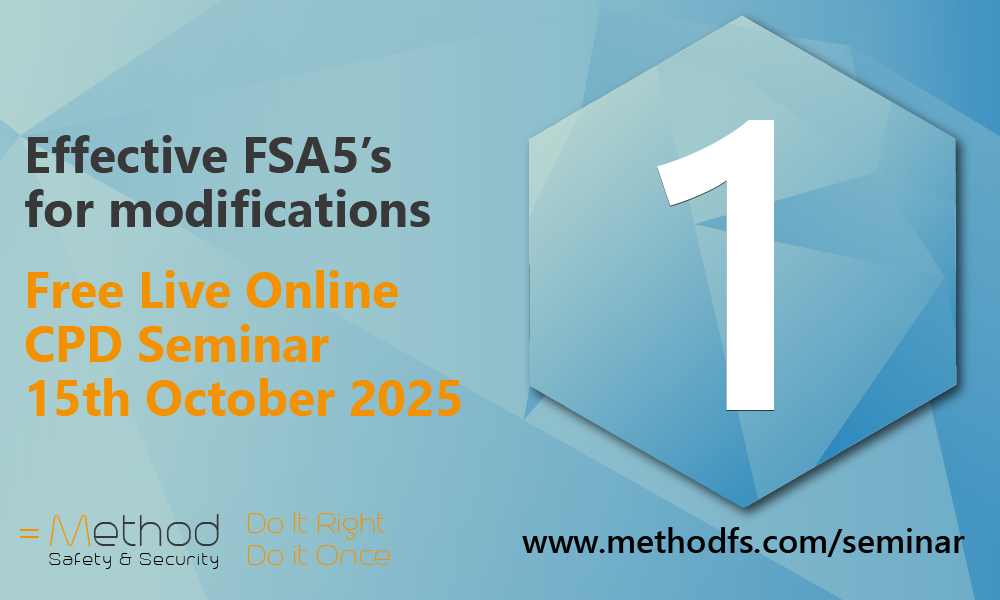
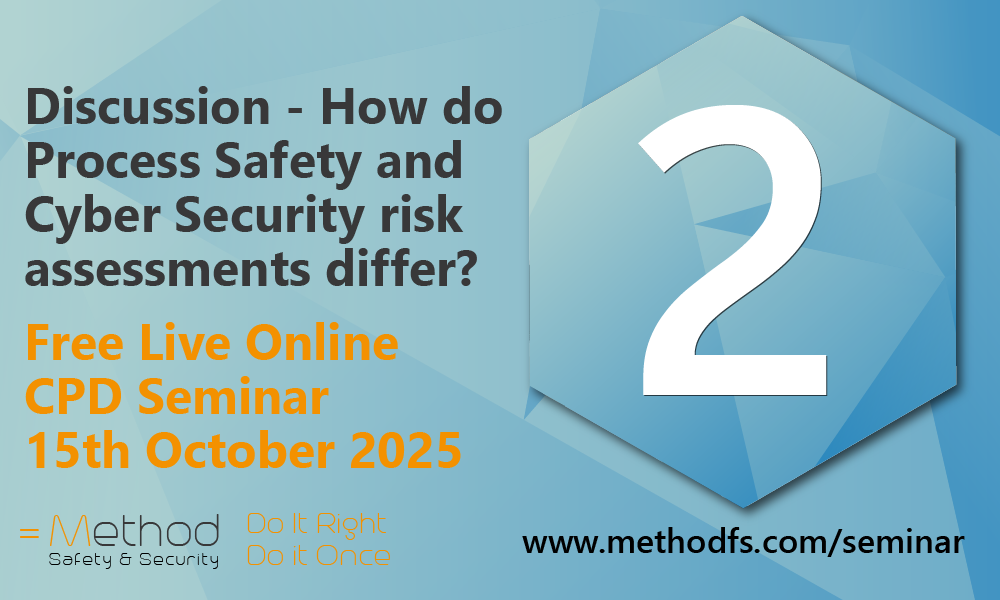
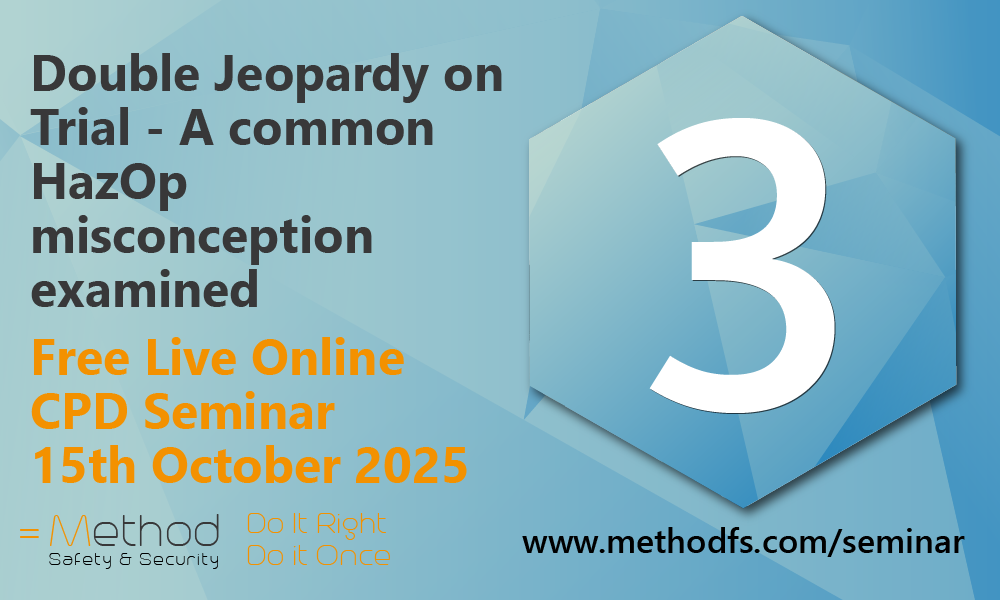
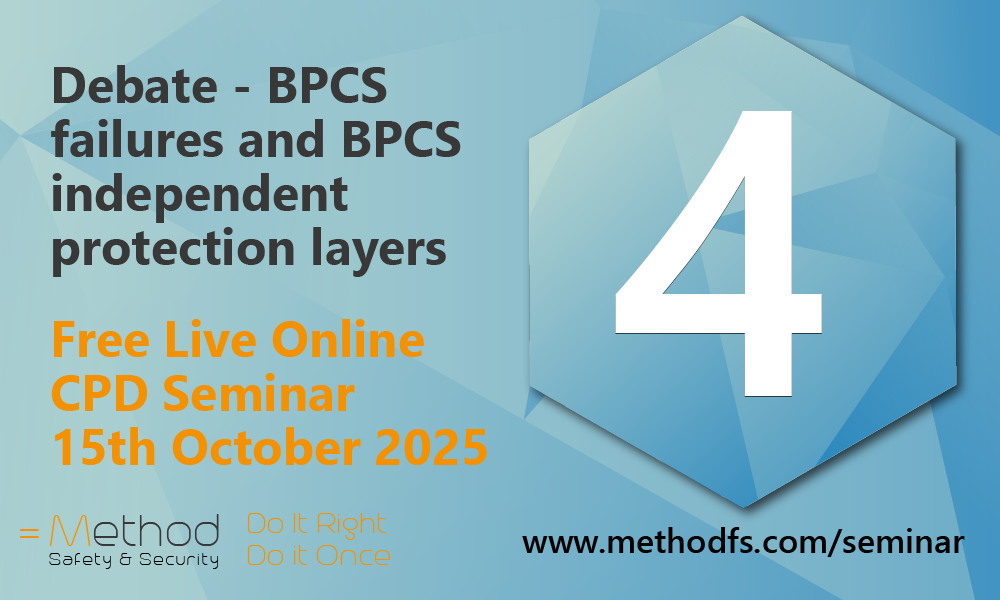
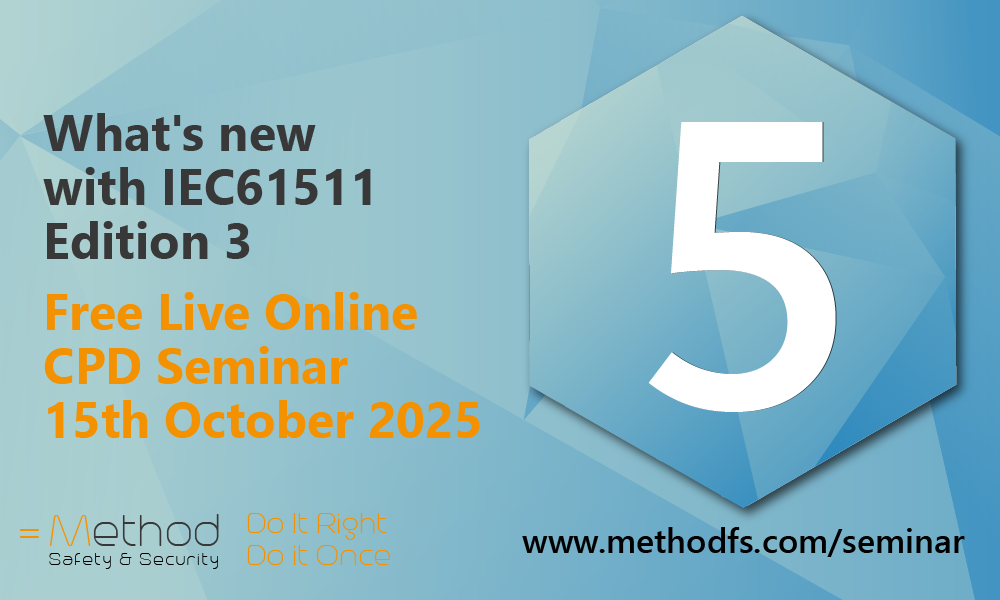

 Keep up-to-date
Keep up-to-date